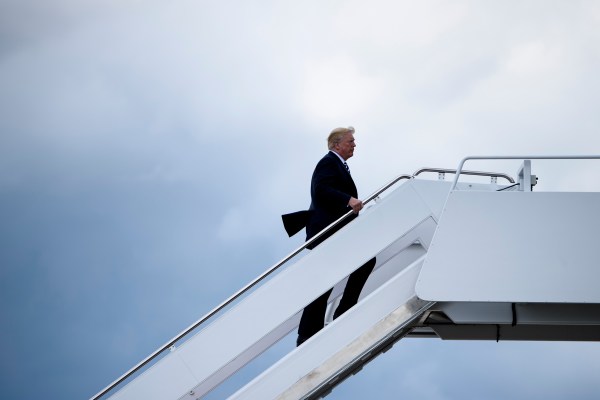Another day, another whopper of a tariff. The Trump administration has been busy finalizing the rulemaking process to put 25 percent tariffs on $200 billion of Chinese goods, which will almost certainly affect the prices of many critical technology components and have on-going repercussions for Silicon Valley supply chains. That followed the implementation of tariffs on $50 billion of goods earlier this year.
Now, President Trump, as reported by reporters on Air Force One this morning, has said that he is prepared to triple down on his tariffs strategy, saying that he is ready to add tariffs to another $267 billion worth of Chinese goods. Although the president has a flair for the dramatic in many of his policies, the China tariffs are one arena in which his rhetoric has matched the actions of his administration.
Each set of these tariffs has been vociferously opposed by tech industry trade groups, but their concerns seem to have had little effect on the administration’s final thinking. Jose Castaneda, a spokesperson for the Information Technology Industry Council, called this next wave of potential tariffs “grossly irresponsible and possibly illegal.”
Yet, despite the constant threat of more tariffs, CFIUS reforms, and the ZTE debacle, China continues to dominate trade with America. Numbers released by the Department of Commerce this week showed that America’s trade deficit with other nations reached five-year highs in July, surpassing $50 billion for the month, with the China trade goods deficit hitting $36.8 billion. These numbers may well have triggered the president’s latest comments.
They may also have been triggered by the recent anonymous op-ed in The New York Times, in which a Trump “senior administration official” said that “Although he was elected as a Republican, the president shows little affinity for ideals long espoused by conservatives: free minds, free markets and free people…. In addition to his mass-marketing of the notion that the press is the ‘enemy of the people,’ President Trump’s impulses are generally anti-trade and anti-democratic.”
Anti-trade or not, it is clear that the package of tariffs and other policy reforms have done little to dampen the trade deficit or trigger a broad restructuring of the supply chains underpinning American brands.
In my discussions at the Disrupt SF 2018 conference the past few days, one persistent theme has been the durability of certain Chinese cities — particularly Shenzhen but not exclusively — to weather these trade storms. Because of the depth of expertise, fast turnaround times, extreme flexibility and cheap costs of hardware supply chains, there are sustainable advantages that the U.S. can’t hope to fight with a couple of measly tariffs — even on $500 billion worth of goods.
Indeed, as one prominent venture capitalist put it to me, hardware investing is now significantly easier for those with the right knowledge of the Chinese ecosystem. Just a few years ago, a couple of millions in capital could get a startup a working prototype. Now, startups can raise $1-2 million in some cases and get a working product into sales channels. The Chinese ecosystem around hardware has just continued to improve with alacrity.
For Trump, a much more robust policy will be needed to move the trade numbers in the other direction. Better funding for universities to produce the right talent. Pushing for a region in the U.S. to become the “Shenzhen of America” through a combination of private and public funding. Greater preferential treatment around taxes for keeping manufacturing in the U.S.
And maybe tariff the hell out of them.
